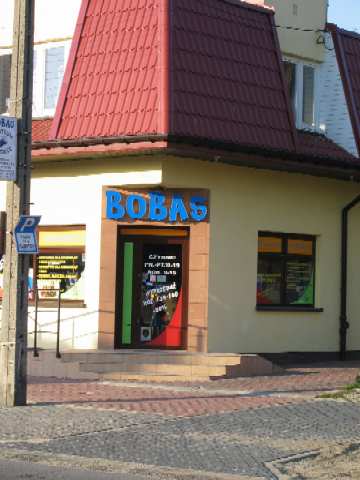
Students Balloon Mission BOBAS
(Built Occasionally Balloon-Attached Satellite)


On the 24 September with the initiative of a students group from Warsaw University of Technology, a meteorological balloon has been started in Jabłonna near Warsaw. It wouldn’t be so special (such balloon are regularly launched by weather stations in Poland) if it wasn’t for the fact that a capsule with a radio amateur transceiver working at 70cm band has been attached to the balloon. A Morse coded transmission from the balloon board lasted throughout the whole flight, sending the information about the current temperature and voltages at the power cell. Despite low transmission power (about 10 mW) telemetric signals were received all the time, not only in our ground station but also in many different places. The reports about reception came from various towns near Warsaw and even from Białystok. No wonder, the balloon reached the altitude of 35 km.


Unfortunately, we wasn’t able to avoid unpleasant surprises. We planned to mount a camera inside the capsule, which was meant to send live picture at 2.4GHz band. Additionally the APRS module (constructed by Andrzej Cichocki), which enables tracking the balloon in the system, and also acts as a digipeater, was to be tested. We even prepared the special software, created by Katarzyna Dąbrowska and Marcin Nowakowski, for supporting telemetry reception from other ground stations. However, during the ground testing of communication systems, a serious power malfunction has occurred, which destroyed both modules. And so the only device which actually did fly with the balloon and performed successfully was the telegraphic-telemetric module “Świerszcz 2” (transl: cricket), constructed by Marcin Stolarski SQ5FNQ. Firmware for this module has been designed in cooperation with Mariusz Kędzierawski. The students who participated in this unusual event were members of two scientific groups: Student Space Engineering Scientific Group (in polish SKIK) at Faculty of Electronics and Information Technology and Student Astronautic Group (in polish SKA) at The Faculty of Power and Aeronautical Engineering. Among them was Grzegorz Woźniak SQ5FG – the constructor of the capsule, and Andrzej Kotarski SP5ISS, who created the introduction presentation. Two colleagues fresh after the radio amateur exams – Cezary Jezierski and Łukasz Rymaszewski were present as well. It was them who enabled a continuous reception of the signals from the balloon, since they, in turns, performed the role of an “organic antenna rotor”. The photo report was created by Anna Bronowska SQ5MBN. The tutor of SKIK – PhD Krzysztof Kurek, who sacrificed lot of evenings to watch the laboratory tests was there too.



“As a matter of fact, the purpose of the BOBAS mission (Built Occasionally Balloon-Attached Satellite) was to create the platform for testing communication components for the first Polish student satellite PWSat.”, says Marcin Stolarski SQ5FNQ, the project coordinator. “Due to the power malfunction we were unable to use all the systems, but the experiment created the possibility of checking in the real conditions the way of communicating high distance objects moving in the Line Of Sight (LOS).” Each subsequent experiment of this kind enables to understand and test systems and solutions used in space engineering. An interesting fact was the change of frequency of the transmitter mounted in the capsule in relation to temperature. The information about the temperature was possible to read at all time, because it was transmitted with telemetry using the Morse code. In the final stage of the rising of the balloon, the value reached -50ºC.



Having reached the altitude of 35 km, the balloon burst and the capsule started falling on the parachute. The search for the balloon (the capsule has been equipped with an additional battery for longer working time, after the standard power cell switched off), with the use of radiolocation has been organized. Unfortunately, BOBAS has not been found.
The BOBAS mission has already been the second such experiment organized by students from Warsaw University of Technology. In the near future next meetings like this are planned. This time we will spare no effort to ensure that the elements, which failed in Jablonna, meet our expectations and function properly. Additionally, we are planning to add a few more advanced systems to the capsule.
The representatives of students’ scientific group SKIK and SKA would like to invite all willing and interested in experiments like this, to cooperate and have fun.
Many thanks
The students from SKIK and SKA groups would like to thank the Institute of Meteorology and Water Management (IMGW) from Legionowo for preparing the balloon. Without them the project would be very hard to carry out.
Film:
Telemetry received (TOP 10):
Because SQ5FNQ’s station was referential, the diplomas are awarded to:
TOP 10:

Congratulations. The diplomas will be send by the post office. The next chance for getting the diplomas is coming soon. The BOBAS2, BOBAS3 and BOBAS4 missions are already organized.
Results:
Despite having received not much data from other radio amateurs, it was possible to mask some errors in the reference ground station. I would like to thank all people who participated in the DGSS experiment, and I’m looking forward to meeting you at the next ones. The figures below present the data received. It needs to be remembered that temperature measurement includes errors resulting from the limited range of thermometer DS1820, which can’t show temperatures below -50ºC.







Marcin SQ5FNQ
Coordinators: Marcin Stolarski SQ5FNQ and Grzegorz
Woźniak SQ5FG
Participants: The students from SKIK and SKA
Homepage:
http://www.ire.pw.edu.pl/skik/
Status: Closed